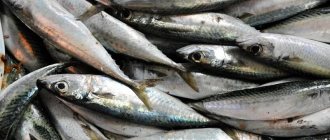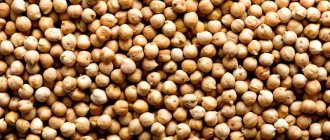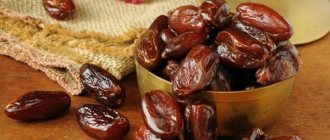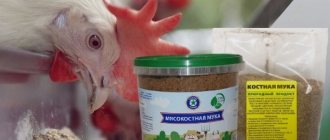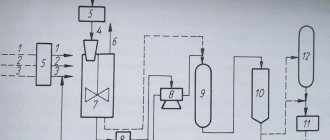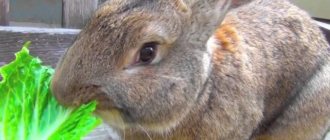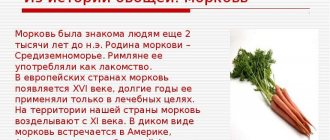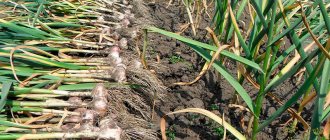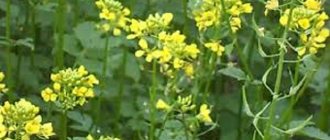Ready-made feed: common types
The market offers a wide range of combined feeds that are used to feed laying hens on private farms. The age of the bird is a factor that determines which feed to choose for your pets. Let's look at the most popular options.
PC-1-1
This combined feed in the form of cereals from the PK-1 group is intended to feed chickens aged 20-45 weeks. They begin to use it from the moment egg laying starts. The composition has a beneficial effect on egg shells. If you clearly know how to give feed to chickens, egg production will reach high levels without impurities. The composition of feed for laying hens is as follows:
| No. | Component | Share in composition (%) |
| 1 | wheat grain | 50 |
| 2 | Corn grain | 9 |
| 3 | Barley grain | 10 |
| 4 | Soybean meal | 5 |
| 5 | Sunflower meal | 13 |
| 6 | Bone Meal | 4,7 |
| 7 | Fish meal | 1 |
| 8 | Gluten from corn | 1 |
| 9 | Defluorinated phosphates | 1 |
| 10 | Limestone flour | 2 |
| 11 | Table salt | 0,3 |
Cost: 20 rubles / 1 kg.
PK-1-3
Compound feed for laying hens PK-1-3 is used as a diet for poultry after 45 weeks of life. It looks like small granules. The packaging indicates how to feed the chickens with this mixture. Thanks to it, the bird gets satiated faster. It consists of the following components:
| No. | Component | Share in composition (%) |
| 1 | wheat grain | 14,1 |
| 2 | Wheat bran | 12 |
| 3 | Chalk | 3 |
| 4 | Barley grain | 30 |
| 5 | Sunflower meal | 8,1 |
| 6 | Oat grain | 15 |
| 7 | Table salt | 0,3 |
| 8 | Limestone flour | 1,5 |
| 9 | Wheat feed | 2 |
| 10 | Premixes | 1 |
Price: 16 rubles / 1 kg.
PC-2
This is feed for young poultry, the age of which reaches 1-7 weeks. Made in the form of small grains. It contains useful substances that ensure the formation of a young healthy organism of the future laying hen at an early stage. The composition of feed for chickens is as follows:
| No. | Component | Share in composition (%) |
| 1 | wheat grain | 43,72 |
| 2 | Corn grain | 30,41 |
| 3 | Lysine | 0,45 |
| 4 | Soybean meal | 11,15 |
| 5 | Sunflower cake | 8 |
| 6 | Feed methionine | 0,2 |
| 7 | Fish meal | 1,8 |
| 8 | P5-1 (premix) | 1 |
| 9 | Limestone flour | 1,61 |
| 10 | Monocalcium phosphate | 1,33 |
| 11 | Table salt | 0,24 |
Cost: 25.5 rubles / 1 kg.
PK-3
Compound feed for laying hens PK-3 is used as the main diet for poultry aged 8-20 weeks. Like the previous option, this is a cereal that prepares the bird for intense egg production. The composition of feed for laying hens is as follows:
| No. | Component | Share in composition (%) |
| 1 | wheat grain | 73,5 |
| 2 | Bone Meal | 2 |
| 3 | Lysine | 0,31 |
| 4 | Soybean meal | 5,5 |
| 5 | Sunflower meal | 13 |
| 6 | Feed methionine | 0,16 |
| 7 | Sunflower oil | 8 |
| 8 | Table salt | 0,25 |
| 9 | Limestone flour | 0,38 |
| 10 | Baker's yeast | 1 |
| 11 | Baking soda | 0,1 |
| 12 | Tricalcium phosphate elements | 2 |
| 13 | P2 (premix) | 1 |
Price: 21.5 rubles / 1 kg.
In addition to these types of feed, there is also compound feed PK-4, PK-5, PK-6, and others. You can also prepare combined feed for laying hens at home with your own hands, knowing the basic composition.
Is it possible to feed laying hens peas?
It is not only possible, but also beneficial for laying hens to introduce pea cereal into their diet. This product is a valuable source of carbohydrates and proteins, as well as a number of amino acids, micro- and macroelements, and vitamins.
Peas, along with other legumes (actually beans, lentils and beans), are a powerful stimulator of egg production in chickens, therefore it is especially useful to give them in the autumn-winter period to maintain the productivity of laying hens.
We recommend reading about what should be included in the diet of chickens, what to feed laying hens, how much feed a laying hen needs per day, how to feed chickens in winter for egg production.
Do they eat it?
As you know, chickens have a very poor taste of food. This is why they can peck at something inedible and even dangerous (which explains the high percentage of chicken poisonings from household pesticides and toxins).
Pea cereals are eaten by birds as well as any other leguminous crops, especially as part of mashes and dry grain mixtures.
Did you know? Chickens (like most birds) have only 30 taste receptors, while humans have about 10 thousand. However, the championship in the number of taste buds belongs to the catfish, which has more than 100 thousand of them and they are located not only in the mouth, but throughout the entire surface of the body.
Let's sum it up
To summarize, we note that it is useful to give the supplement to chickens, but only in cases where there is no space for grazing. Because with a deficiency of this crystal, chickens experience a decrease in weight gain. Therefore, the poultry farmer has two ways to solve this problem:
- if it is not possible to organize natural grazing, add clover, sorrel, plantain and dandelion to the chickens’ diet;
- If it is not possible to diversify the chicken menu with herbs, add salt to the mash.
The listed varieties of grass contain the ingredient in question in small quantities. Due to which, by including such an additive, the diet will be enriched.
And lastly, in order not to add crystal to the feed in winter, it is recommended to prepare greens for future use. Such products will help maintain high egg laying and saturate the chickens’ body with useful vitamins.
Every farmer knows that mineral components must be present in the diet of poultry. But many poultry farmers doubt whether salt can be given to chickens and chickens. This mineral substance consists of sodium, which is beneficial for birds, and harmful chlorine. Therefore, you need to add salt to food carefully, observing the dosage, and in certain cases it is better to refuse to use the additive.
General feeding recommendations
Chickens are practically omnivores, so they are happy to eat any food that their owners put in their feeders. But this does not mean that birds can be fed with any food from the owner’s table.
The natural diet consists of the following products:
- Grain, plant seeds;
- Grass, greens, hay;
- Berries, vegetables, fruits;
- Small insects, worms.
When the chickens are kept closed, the menu is drawn up by the owner, and he definitely needs to know what can and cannot be fed to the bird. Laying hens can only eat some of the leftovers from the master's table.
The following products have a negative impact on poultry health:
- Cheese;
- Butter pastries;
- Sweets;
- Sausages;
- Fatty soups;
- Citrus peel;
- Oils.
Is it possible to give chickens bread? It is this product that the owners try to treat the birds to. Bread is rich in carbohydrates, and feeding it as a source of energy is acceptable.
But chickens can only be given white, stale bread. Fresh baked goods are only good for humans, but they are harmful to poultry.
Read also: How to breed Levamisole for chickens
Meat raw or boiled. There is no general consensus on the question of whether chickens can have raw meat. Some poultry farmers feed their poultry waste from cutting meat carcasses raw, while others prefer to add it to boiled mash.
In any case, you shouldn’t get too carried away with this product, since birds need it in small quantities.
The diet of chickens should be balanced and consistent with their natural needs. Only in this case will it be possible to maintain the health of the birds and achieve maximum productivity from them.
Makarov Ivan Vasilievich
Hereditary poultry farmer, owner of a poultry farm, graduated from St. Petersburg State Agrarian University with honors, author of articles in specialized publications
Does chicken need salt?
Salt is a mineral, and mineral elements must be present in the diet of birds. They have a positive effect not only on the physical condition of chickens, but also on bone tissue, metabolism, and the functioning of internal organs. Chickens receiving a mineral supplement produce more eggs.
Salt must be given to the chicks. Without this additive, cannibalism occurs in young animals; chickens begin to peck at each other until they have deep wounds in order to get to the salty blood.
If a poultry farmer raises chickens without walking or with rare walking, and does not use feed containing salt, then he must provide the mineral element regularly.
Do birds need salt?
Should chickens be given salt? First, let's look at what this product is. A colorless mineral called table salt is a source of essential elements responsible for the normal movement of oxygen in the blood and the proper functioning of metabolism, as well as nerve impulses.
However, if you take such a supplement in large quantities, you can harm your own health. As for birds, from a veterinary perspective, an excess of crystal will certainly lead to the death of chickens.
But it should be noted that in moderate dosage, sodium chloride is extremely necessary for the bird’s body, as well as for any other living creature.
Pumpkin for laying hens
Let's look at the photo. We slightly cut off the hard peel and hang it. Comfortable!
It is recommended to introduce pumpkin into the diet of adult chickens starting at 47 weeks. The feed mixture includes grain (it is better to combine wheat and barley) - 40 and 30 g, boiled potato tubers - 50 g.
This whole thing is supplemented with meal and yeast - 14 g each, fish remains - 10, our heroine (pumpkin) - 20 g. Green ingredients are required - 30 g, bone meal and chalk - 1 and 3 g. You can’t do without shells - 5 g .
What if chickens don't like pumpkin or aren't accustomed to it? We recommend making feeding containers from pumpkin halves.
See the photos for examples.
Let's finish here. Grow pumpkin for your chickens for the winter!
Feeding rules
Add salt to your chickens' diet with extreme caution. The daily amount of mineral added to the feed of adult chickens should not exceed 1% of the total dry mass of cooked food. If we determine the norm based on the bird’s body weight, then one adult should not consume more than 1.5 grams of salt per day.
The mineral component is usually added to liquid mashes, where it dissolves. To make it easier to estimate the optimal dosage for the livestock, below is an approximate summer menu per day for one individual:
- grain – 50 g;
- fresh herbs – 50 g;
- flour mass – 50 g;
- bone meal – 2 g;
- meat – 15 g;
- crushed shell rock – 5 g;
- salt – 0.5 g.
A diet that helps increase egg production in chickens during the winter months can be as follows:
- grain – 50 g;
- boiled potatoes – 100 g;
- liquid mash – 30 g;
- sunflower cake – 8 g;
- fermented milk products – 100 g;
- herbal flour – 10 g;
- bone meal – 2 g;
- crushed chalk – 3 g;
- salt – 0.5 g.
See also
Is it possible and in what form is it better to give peas to laying hensRead
Chickens are given finely ground salt. Add it to dry food in an amount of 1%. It is allowed to give the mineral from the 10th day of life of young animals. One young individual per day should receive no more than 0.05 g. When the chickens reach the age of 50 days, the daily dose can be increased to 0.1 g.
How it can harm
When salt is consumed in large quantities, chickens experience severe poisoning and often death. A dose sufficient to cause the death of a bird is considered to be 3.5-4.5 g per 1 kg of weight. Intoxication develops within 4 days after consuming an increased amount of salt.
Signs of NaCl poisoning are as follows:
- strong thirst;
- vomit;
- restless behavior;
- heavy rapid breathing;
- change in skin color to red or blue;
- impaired coordination of movements.
If you notice similar symptoms in your birds, and there is a suspicion that they may have consumed an increased amount of salt, you need to urgently give them water.
Find out how much feed a laying hen needs per day, as well as how to make feed for chickens yourself.
If the birds are not able to drink on their own, you need to force them to drink by opening the beak and pouring the liquid in with a syringe.
After soldering, they begin to feed the chickens with decoctions of flaxseeds, potassium chloride, and glucose. You should definitely consult your veterinarian.
Did you know? The smallest chicken egg weighed just over 2.5 grams, and this record was recorded in China.
Is there any harm?
Salt can be harmful to chickens if it is included in excess in the diet. The result is severe intoxication, which in most cases ends in death. Moreover, death occurs in a short time - in about 10 hours. And an increase in symptoms of intoxication is observed within 3-4 days after consuming an excess amount of the mineral.
The lethal dose for an adult is 4 grams per 1 kg of body weight. Poisoning is identified by the following symptoms:
- extreme thirst - the bird often drinks water;
- agitated behavior;
- release of vomit;
- rapid but heavy breathing;
- redness or blue discoloration of the skin;
- impaired motor ability, staggering and falling over of the bird when walking.
See also
What is the best way to feed chickens at home so that they lay a lot Read
The dying state is accompanied by convulsions.
If the listed symptoms appear, and there is a possibility that the chickens have eaten an excessive amount of salt, then immediate resuscitation measures are required. First of all, the chickens need to be given a large amount of water, and not pour it into the drinking bowl, but make sure that the pets drink everything. If the chickens are in such poor condition that they cannot drink, then you will have to give them water by force: open the beak with your fingers and pour the liquid into the mouth using a syringe.
Some farmers, after watering, give sick chickens vodka or vegetable oil in a volume of 10 ml per individual. But you should talk to your veterinarian about this method of treatment.
To restore the body, chickens are given a decoction of flaxseed and a glucose solution. It is also recommended to lower the sick bird into a bowl of cold water.
How to feed chickens correctly
How to properly feed fish to chickens? First of all, the quantity and rules for including this product in the menu depend on the age of the bird. For example, it is not recommended to give this additive fresh to laying hens.
Because the eggs acquire an unpleasant odor. But for adult broilers this feeding is quite suitable. Moreover, some poultry farmers provide waste with bones and scales.
However, despite the divided opinion, experienced farmers and veterinarians advise adhering to the following feeding rules:
- It is recommended to mince frozen fish of industrial origin and add it to mash;
- To prevent the livestock from becoming infected with worms, it is recommended to boil river fish before feeding;
- products of marine origin also need to be cooked until the bones soften;
- After boiling, the additive in question must be twisted into a meat grinder and only then added to the feed.
In addition, the birds will begin to breathe and move heavily. The best option would be to soak it. In the case when you plan to feed salty waste, it is advisable to mix it with mash.
If you have a large number of livestock and do not have time to regularly prepare minced meat, you can go the following way. Buy a few kilograms of fish, boil it, and then twist it. Next, the finished mixture is sorted into briquettes and frozen. The poultry farmer can only remove the briquette with the finished mixture, defrost it and add it to the feed.
A little about feeding rules
Now let's find out which products it is recommended to add salt crystal to. Various feeds are used to feed chickens. These include vegetable tops, kitchen waste, small potatoes unsuitable for human consumption and other products. If poultry mash is prepared using vegetable crops, adding salt is necessary.
Chickens are often given black stale bread, fish offal and meat scraps. You can give such products to birds, but it is advisable to first digest them and grind them in a meat grinder. You can add crystal to such food, provided that the fish remains have not been salted.
Protein foods are also beneficial for chickens, such as:
- milk or curdled milk;
- whey and low-fat cottage cheese;
- small sea fish;
- shellfish;
- cakes and sprats of grain crops.
It is also recommended to add a little salt to mash of such products. Plus crushed grains.
In the case where chickens are planned to be fed with dry feed, salt cannot be added. These foods contain the following components:
- bone flour;
- minerals and premixes;
- grains and legumes;
- vegetables, herbal flour and milk powders.
From dry feed you can make mash with the addition of low-fat cottage cheese and herbs. As for adding grains, there is no need for this, since the feed is completely balanced and contains all the additives necessary for the full development of the bird.
Moreover, from such feeds, chickens begin to lay eggs better and gain weight faster.
How to prepare food
In a chicken’s diet, 70% is grain feed, the rest is protein feed (plant and animal) and green. The food needs to be crushed to make it easy to peck.
- Animal food: boiled ground meat, fish, bone meal.
- Vegetable – mushrooms, vegetables, fruits. Depending on the season, nutritional proportions change.
- In summer there is more plant and green food, in winter - animal and grain food. If the birds are not freely grazing, then they must add salt and sand, which are necessary for digestion.
- Sand helps to grind food inside the intestines and digest it.
- To ensure that the bird has enough minerals, seashells are crushed, chalk, limestone, and eggshells are added. The shells are washed and crushed, otherwise the chickens, in search of delicacies, begin to peck at their own eggs.
- Millet, millet, barley, rye are the grain base of chicken feed. Millet boiled in water can be given to chickens. Corn is a fatty grain, so it is added to about 5-6% of the grain base.
How and how much salt to give chickens
For laying hens related to all areas, i.e. egg, meat and meat-egg, in any season it is advisable to add 0.5 g of table salt per day per individual to food. If we talk about the weight of the feed, then 1 kg should contain 3-4 g of salt. It is added to wet mash (mixed feed with vegetables) and porridge.
So, the approximate daily diet of one bird may look like this:
- 120 g grain;
- 30 g wet mash;
- 100 g boiled potatoes;
- 7 g cake;
- 3 g chalk;
- 2 g bone meal;
- 1 g yeast;
- 0.5 g salt.
For chickens under the age of 50-60 days, the amount of salt per day should not exceed 0.05 g. From the 50th day it can be increased to 0.1 g.
A little history about feeding birds
In Russia at the end of the 19th - beginning of the 20th centuries. Special poultry farming schools appeared, under the patronage of members of the royal family.
In these schools, everyone was taught the basics of poultry farming. The books of the famous Russian poultry farmer I.I.Abozin most often served as teaching aids. Here, for example, is what he wrote about poultry feed.
Poultry feeds mainly on a variety of grains. In addition, they eat the stems of various herbs and their seeds, as well as the leaves of many trees and shrubs. Various vegetables, berries and fruits serve as a treat for them.
In addition to plant foods, poultry eat animal foods. They eat a lot of earthworms, slugs, various insects and their larvae.
They eagerly eat fish and meat of various animals, crushed bones, and frogs. This omnivorous nature makes it easier to keep poultry and helps reduce the cost of their food. Grain feed serves as their main food; the rest of the feed can be called supplementary feed. It goes without saying that the grain feed must be of good quality, i.e. not rotten, not spoiled by worms, not burnt, etc.
When is it not recommended to add salt?
No salt given:
- free-range feeding chickens;
- feeding on mixed feed;
- broiler breeds (a special diet is prepared for them).
If birds are free to range, salt is not needed as a food additive. Chickens are an omnivorous species, adapted to obtain pasture containing substances necessary for the bird’s body.
Some poultry farmers in the summer, when chickens roam freely around the estate, do not feed them at all. And the birds do not suffer from nutritional deficiencies.
Free-ranging chickens obtain a considerable proportion of sodium chloride from the herbs they consume:
- plantain;
- clover;
- sorrel;
- dandelion
If the birds are kept without walking, but eat feed containing salt, then there is no need to additionally enrich the food with the mineral, otherwise there will be an excess. For the same reason, you cannot give chickens food intended for other farm animals, because the salt content in it is higher than the norm for the bird’s body. You can only feed feed developed for poultry, in which the mineral component is optimal.
The farmer must remember that salt for chickens is not food, but only a nutritional supplement that should be given with extreme caution. If you have doubts about the concentration of a mineral in any product, then you should not put this food in the feeder
Otherwise, poultry farming will end in failure.
Why do you need gravel?
A few words about gravel. It is often put on a par with mineral supplements, although this is incorrect. The function of gravel is to serve as “teeth” for the bird. Once in the gizzard, the gravel settles there and contributes to the grinding of the grain.
Therefore, good gravel should be clean, free of dirt and fine sand, and not dissolve in water or acid. The gravel size for chickens should be 4-6 mm, for smaller chickens - 2-3 mm.
Gravel can be given ad libitum in bulk on the bedding, in a separate container, or introduced into the feed once a week in the amount of 10-15 grams per head. If the bird is kept free-range, it is not necessary to provide gravel.
Is it possible to feed rice to birds in bird feeders?
One of the budget products that is found in almost every home is cereal. Most often, this is what birds are fed with.
But is every grain good for them? After all, when doing good, it is important to follow a number of rules and take into account the peculiarities of the life activities of the wards
Is it possible to give raw/cooked rice?
Many ornithologists notice that rice is most often found in street feeders. Raw or heat-treated. Do birds eat it? Yes, but you absolutely cannot do this! Rice tends to swell from moisture. Once in a bird's tiny stomach, the grains can cause her suffering.
Is it possible to put other cereals in the feeder?
Other common cereals, such as buckwheat and pearl barley, are also dangerous for birds. They have similar properties to rice and expand in a humid environment. Oatmeal and millet (unrefined millet) are considered harmless. They are sold in all pet stores.
What's the benefit
The chemical compound NaCl is necessary for the normal functioning of the body of domestic chicken. It helps maintain the water-salt balance, and also disinfects the body, inhibiting the development of pathogenic intestinal flora, and has a positive effect on the well-being of the bird, its productivity, bone formation, and metabolic processes. Lack of sodium leads to disturbances in cardiac activity, the functioning of the digestive tract, and negatively affects the nervous system and muscle tissue.
It is necessary to introduce this element into the feed of laying hens, which are deprived of the opportunity to walk outside every day.
When you can't do without salt
So, when salt is prohibited, we found out. Now let's find out when this product is recommended. As mentioned above, sodium chloride is necessary for the normal functioning of the body. Taking salt solves several problems:
- maintains water-salt balance;
- disinfects the body;
- neutralizes harmful intestinal flora.
If the hen is grazing, salt should be present in the diet. Because this component improves metabolism. The product in question is especially important in winter and for those chickens that are deprived of free movement.
Important: It is recommended to add a food additive to all wet mash. Add this crystal at the rate of 3 grams. per kg. stern.
Despite the fact that salt consists of metal and aggressive poison, in tandem a product is obtained that is useful for egg-laying chickens. However, you need to include it in your diet carefully and little by little.
Is it possible to give the husks from the seeds?
The husk of sunflower fruits is one of the most widespread by-products of the cultivation of this plant. The share of husks is about 15–20% of the total mass of seeds, therefore, when harvesting and processing the crop, the question of its disposal or appropriate use for economic needs arises.
Including as additional food for valuable breeds of animals and birds. As you know, the husk is poor in all kinds of proteins, fats, vitamins and minerals, and its nutritional value for the chicken body is quite low.
This product contains a large amount of fiber (about 50% of the total mass) and other complex fibers. Therefore, it is strongly not recommended to introduce pure husks into the diet of chickens: due to the special structure of the intestines, their body is not able to properly break down and absorb foods rich in complex fibers.
Such feed will not have a positive effect on the productivity and health of the bird, but instead can cause irritation of the gastrointestinal tract and other digestive disorders.
Did you know? Sunflower oil was first pressed in Great Britain in 1716. Until this time, sunflowers were grown by Europeans exclusively for decorative purposes.
Beneficial features
Chicken meat is perfectly digestible at any age, while increasing the body's defenses and creating conditions for normal life. This product is presented in an affordable price range for all categories of buyers, and includes:
- In the diet menu - when fighting excess weight and diabetes.
- In the diet of weightlifters and bodybuilders - to build mass, restore muscle fibers and maintain tone.
- Included in the diet of children and the elderly to maintain immunity.
In terms of protein content, chicken meat is one of the first places among livestock products.
In dietary and sports nutrition
Considering the calorie content of different parts of a chicken carcass, when consuming them in the diet, adhere to the following rules:
- Boiled chicken breast (white meat) is highly nutritious and low in calories compared to pork and beef.
- Boiled legs and drumsticks (red meat) contain a lot of iron, necessary for hematopoiesis, which prevents signs of iron deficiency anemia in humans.
- Chicken stew with vegetables, without adding oil, is a satisfying dietary dish.
- Chicken breast with pasta - as part of the daily requirement of essential amino acids and protein, during heavy physical activity.
In addition, chicken meat contains a sufficient amount of phosphorus and zinc, which are responsible for the health of hair, nail plates and tooth enamel.
For children and the elderly
Chicken meat is useful for maintaining the reproductive system of a woman and the bone tissue of the unborn child.
- All parts of boiled or stewed chicken are used as building material for the musculoskeletal system of a young growing organism.
- Chicken broth - recommended for weakened and sick people as a means to restore strength. for people with cardiovascular diseases and diseases of the gastrointestinal tract.
To prepare soups and broths, you should purchase meat breeds of chickens
Otherwise, it is important to consider that when preparing broth from broiler chickens, the first broth is drained in order to get rid of the possible presence of harmful substances and additives
The value of salt in the diet of chickens
From a chemical point of view, table salt is a tandem of chlorine and sodium.
- normalize water balance;
- regulate water-salt metabolism;
- improve liver function;
- transport oxygen through blood vessels;
- improve the conductivity of nerve impulses;
- suppress pathogenic microflora of the stomach and intestines;
- participate in the formation of bone tissue, muscle tissue, lymph cells, intercellular fluid;
- support healthy skin and feathers.
How and in what quantity to give beets to chickens
The root vegetable contains a large amount of vitamins and minerals that are necessary for the development of birds.
It is given in its pure form, mixed with feed or other root vegetables (carrots, potatoes, etc.). The vegetable is cut into small pieces or grated on a fine grater, which facilitates the digestion process for chickens.
As for chickens, root vegetables are introduced into their diet on the 10th day of life. It is not recommended to give it in its pure form. For example, mix boiled beets with potatoes. This mixture promotes the growth and development of birds. The daily norm is no more than 10 g.
It is not recommended to feed birds red beets; it is better to choose a light-colored root vegetable.
Beets are one of those products that can cause both benefit and harm. There are a number of contraindications for excessive use of the product:
- causes diarrhea, diarrhea;
- leads to a depressed (sometimes aggressive) state;
- reduces egg production;
- beets can lead to pecking and cannibalism, since after eating the root vegetable, the feces become red. This shade is irritating to birds. Dirty feathers can provoke fights.
If symptoms appear, remove beets from the bird’s diet and observe its reaction. If there are signs of anger, the chickens are isolated from each other for a short time.
Do you feed your chickens beets?
Not really
Sugar
Sugar beets are ideal for building muscle in birds as they are high in glucose. It also contains easily digestible carbohydrates. Thanks to them, birds get a lot of energy. Especially useful for chickens.
Before use, the root vegetable is crushed and mixed with food or other vegetables. It is preferable to boil it. Beets can be frozen and fed to chickens all winter. Adult birds are given 30-50 g of sugar beets per day, chickens - 10 g per day.
Stern
Experienced poultry farmers recommend feeding birds with fodder beets year-round. This species contains all the necessary vitamins (C, B1, B2, PP) and amino acids for the growth and development of birds. Improves appetite and promotes rapid digestion of feed.
Fodder beets can also be mixed with other vegetables, and chopped tops can be added in summer. This mixture will enrich the bird’s diet.
Give 40-50 g boiled. It is useful to feed chickens in winter, early spring and during molting.
conclusions
It is possible and even necessary to give salt to chickens, especially when there is no or limited space for walking. True, it is useful only in very limited quantities. If you exceed it, then all the benefits will evaporate before your eyes and turn into harm.
The product is calculated based on the feeding method. If we give commercial feed for chickens, then there is no need to add white crystals there at all. If we feed with mash, then the norm is no more than 5 g per 1 kg of feed. With varied feeding, it is better to exclude the additive from the diet or feed only with mash without exceeding the above-described norm.
Do chickens need salt for feeding?
Table salt (sodium chloride - NaCl) is a crushed colorless mineral, a source of macro- and microelements necessary for the movement of oxygen in the blood, the correct functioning of nerve impulses and metabolism.
Controversial point
So, from a veterinary point of view, there is an affirmative conclusion about the dangers of this compound for the health of black whales - in tangible quantities, the familiar powdery chemical compound on the birds’ menu will result in a risk to their lives.
The fact of negative impact is not controversial. Along with this, there is a diametrical factor - white crystals are a necessary mineral supplement, which, after all, the body of a living creature needs.
Let's take it in order.
Why not?
Let's continue the thought. It should be understood that this substance is not food, not an independent carrier of calories and not a delicacy, but exclusively a food additive, and optional at that. If your chickens are kept in a free-range format, then this component is not required to be introduced into their diet every day.
The fact is that chickens are independent search engines, capable of digging up everything that meets their needs in the pasture.
Free grazing allows you not to focus on the feeding regime, since they find food themselves
The concept of feeding mixed feed must also have certain regulations; it should be remembered that feed for laying hens must be composed of components intended and approved only for chicken. You should not be afraid that the composition of such food substitutes for the most part already contains this substance.
Feeding standards for adult laying hens in grams per head - table
But if you do not judiciously treat the birds with the usual food of pigs, then such a feast without options will lead to severe poisoning and death of the birds due to the high salt content in the portions.
Not to mention that in its pure form this additive is absolutely unacceptable in chicken feeders. It is curious that if chickens do not receive enough salt, they often begin to peck at each other in order to obtain salty blood.
Controversies and benefits
And yet, if so, why?
Let's repeat. Sodium chloride is necessary for the full functioning of the body, it supports water-salt balance and promotes general disinfection - it extinguishes the activity of harmful intestinal microflora.
Salt for chicken feeding, in general, for metabolism in living beings, this product has always been a valuable component. Chickens that are deprived of freedom of movement and often in winter especially need this approach.
Salt is an integral ingredient in most wet mashes (steamed mixed feed with vegetables) and porridges at the rate of no more than 3-5 g per 1 kg of feed.
An additive consisting of two elements of the periodic table, one of which is metal (Na - sodium), and the second is an aggressive poison (Cl - chlorine), in combination is very useful, especially for egg-laying chickens
And since we discussed above the extreme activity of this substance, it must be included in food with extreme caution and caution.
Yes or no?
Hello. Introducing a white product into the chicken menu is unsafe for their health. This is a fact that cannot be disputed. However, on the other hand, white crystals are a valuable mineral supplement that the bird’s body needs. So there are two sides of the coin and each requires clarification. But I’ll write right away that everything written in our articles is correct.
Why not?
If your chickens roam freely every day, then there is no need to add this supplement to their diet. The fact is that they themselves will find everything they need in the pasture. And to be honest, when free-range, you don’t have to feed them at all. Chickens will find food for themselves, because they are practically omnivorous.
Then, when feeding mixed feed, you should remember to feed laying hens only with feed intended for them. Most of these foods contain salt, but there is no need to worry about this. But if you give pig feed to your birds, they will definitely be poisoned by this additive, since its content there is quite high.
Then remember that salt is not a food, but only an optional food additive. If you feed her enough, your poultry farming will end before it even begins. Therefore, if a product contains salt and you are not sure whether it contains more than the permissible limit for poultry, then it is better not to give such food. You should also completely exclude this additive in its pure form from the diet of laying hens.
Why yes?
Salt is a valuable nutritional supplement that is very beneficial for chickens, especially egg-laying breeds. True, you need to include it in food very carefully. It is especially important not to forget about it if the chickens are raised without free range or with limited range. It is included in many feeds, but in very small quantities.
In small farms it is an essential ingredient in most wet mashes. But, again, 1 kg of food should contain no more than 3-5 g, otherwise, instead of benefit, white crystals will cause harm.

